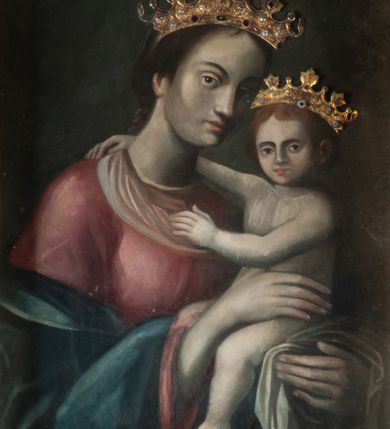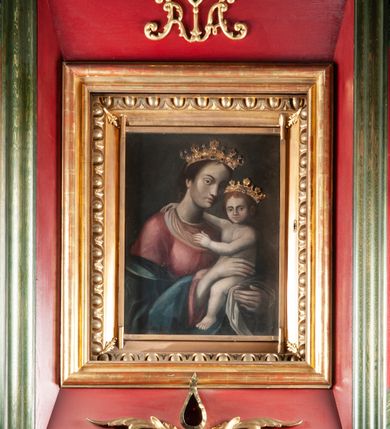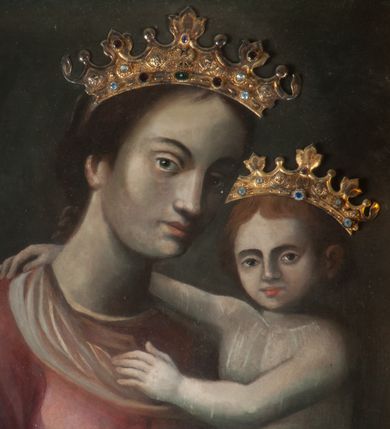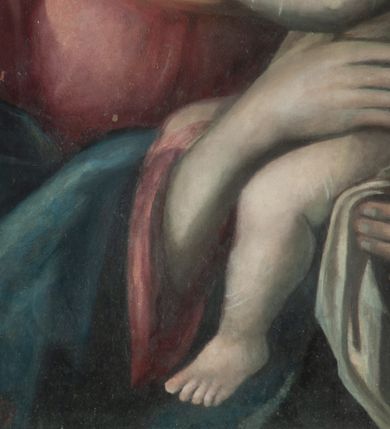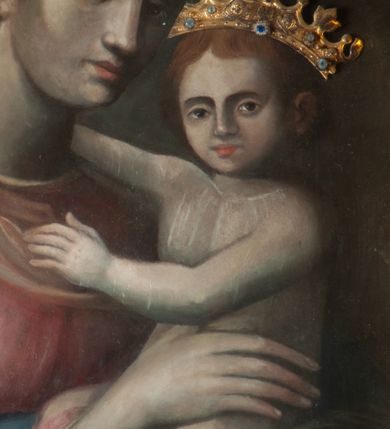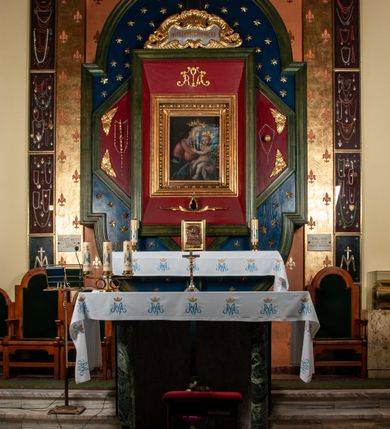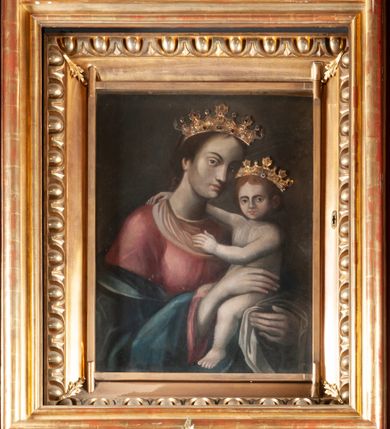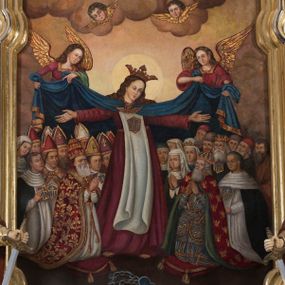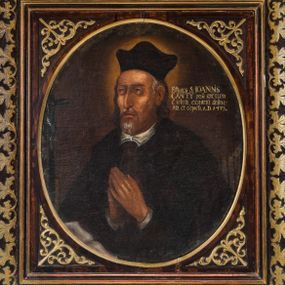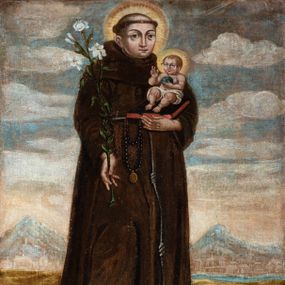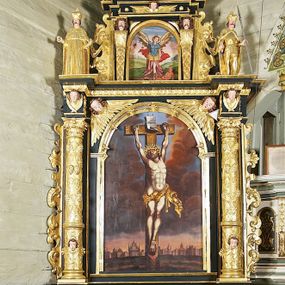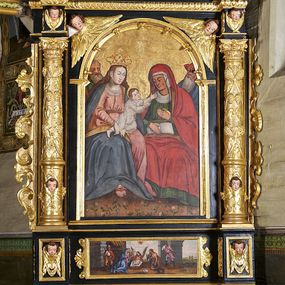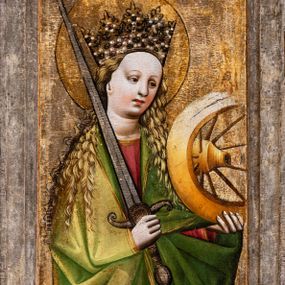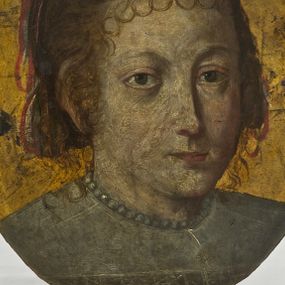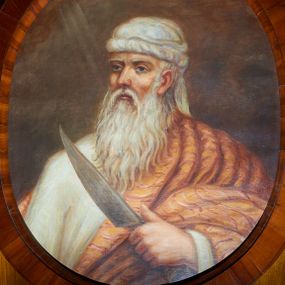
Our Lady of Graces
Identifier
DZIELO/09109
Category
Picture
Amount
1
Catalogue note author
Maria Działo
Abstract
According to the Franciscan tradition, the image of Our Lady of Graces, also referred to as the Duchess of Wieliczka, is older than the monastery complex itself and originates in a chapel devoted to St. Anthony of Padua, the patron of miners. The painting of Virgin Mary was apparently left by Balkan or Italian merchants who presented it to local miners in exchange for salt. Two paintings from the chapel (the painting of Our Lady of Graces in question and the painting of St. Anthony of Padua) were moved to the side altars in the Franciscan church, recognizing them as "wonderworking". The chapel itself was demolished. In 1718, the church was consumed by a fire which destroyed the painting of St. Anthony. The painting of Our Lady of Graces was saved. It is suspected that this was due to the stone painting support which only partially broke. The painting was only cursorily restored and located at the new altar, where it was covered by the painting of Our Lady of the Immaculate Conception. When the painting was restored in 1976, the letters "A D" and the date "1678" were uncovered which, according to the researchers, referred to the first restoration of the painting. In turn, during the 1989 restoration, the Dąbski or Dąbrowski signature was uncovered, probably belonging to the painting's conservator from 1678. The paintings were created in the egg tempera technique on chalk and glue (dyed with red oxide pigment). The painting support is particularly important, as it is built of arenisca calcárea, a common material throughout the Beskids. Although the material used indicates the local origins of the painting, its author remains unknown. The painting was initially presented at the Our Lady of Graces altar in the main nave. However, it is currently displayed in the Our Lady of Graces chapel. Its extension was commenced in 1988 for the sole purpose of placing the painting and the relics of God's servant Alojzy Kosiba there. Alojzy Kosiba was a long-term charity collector with the monastery in Wieliczka. The altar in the chapel was finished in 1994, and in 1998, the complete structure was finished, together with its wall paintings which were thematically connected with the crowning of the painting by Pole John Paul II. Beginning with the 18th century, the painting was worshipped, particularly on August 2 – during the famous feast of Portiuncula (Saint Mary of the Angels), which was attended by crowds of pilgrims. The sermons delivered during indulgence were devoted to Virgin Mary, which emphasised her importance for the sanctuary in Wieliczka, quoted the history of the miraculous painting and listed the graces people had enjoyed after praying to it. The prayer groups gaining indulgences were headed by monastic brothers. For 60 years of his life, this was the responsibility of God's servant, Brother Alojzy Kosiba, whose relics were buried in the chapel of Our Lady of Graces.
Other works from this place
Similar works
How to cite?
Maria Działo, "Our Lady of Graces ", [in:] "The Sacred Lesser Poland Heritage", 2026, source: https://sdm.upjp2.edu.pl/en/works/our-lady-of-graces
